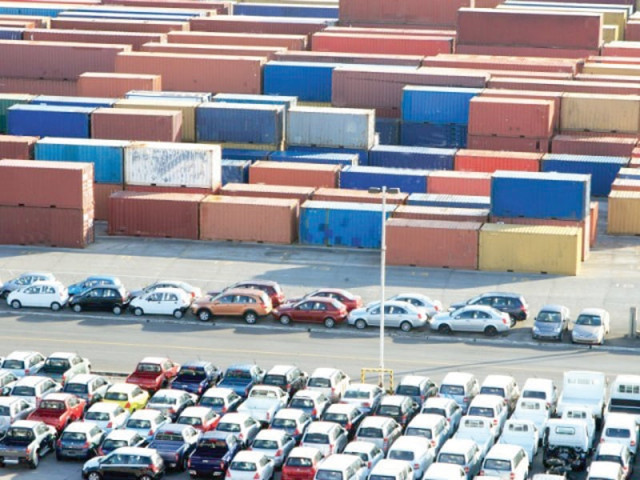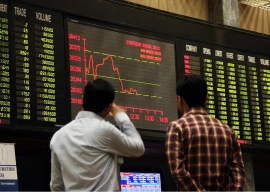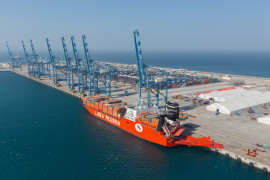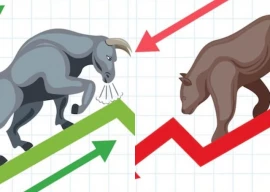
The summary published by PBS indicates a whopping 39% fall in the trade deficit in dollar terms in August 2019 over the amount reported in August 2018. Imports declined by 26.3%, while exports too declined by 7.7%. Further, the trade deficit declined by 35.9% in the first two months of FY20 compared to the trade deficit reported in the first two months of FY19. Imports declined by 21.4% while exports increased by 2.8% in the first two months of FY20 compared to the value reported in FY19. The decline in the trade deficit was a result of policies to compress imports rather than of increasing the value of exports.
According to the State Bank of Pakistan (SBP), the real GDP growth in FY19 was 3.3%, compared to 5.5% in FY18. The index on the production of selected large-scale manufacturing items, as reported by SBP, suggests a decline in industrial activities across Pakistan. The overall growth is -3.28% during July FY20, compared to 0.69% during July FY19. The import-dependent industries have experienced significant decline. The production in coke and petroleum industry decreased by 25.12%, pharmaceuticals declined by 12.14%, chemicals declined by 5.94% and automobiles declined 27.4%.
Further, the export-oriented industries in Pakistan have also struggled with either negative or negligible amount of growth rates. The larger textile industries and the food beverage industries reported negative growth rates of 0.12% and -7.92% during July FY20. However, the leather industries, in particular the footwear industry, experienced revival as their growth rates were higher during July FY20 compared to their growth rates during July FY19.
Further, according to the third quarterly report published by the SBP, the agriculture sector and the services sector have also reported a decline in their growth rates. The agriculture sector reported a growth of meagre 0.8% in FY19 compared to 3.9% in FY18, while the services sector reported a growth rate of 4.7% in FY19, down from 6.2% in FY18. The industry sector grew at 1.4% in FY19 against a target of 7.6% set in the Annual Plan 2018-19.
The imports in August 2019 were 26.3% lower than the imports in August 2018. The imports in the first two months of FY20 were 21.4% lower than the value reported for the first two months of FY19. Imports of all commodity groups reported in the PBS monthly release, except the machinery group, has declined. Imports of electrical machinery and apparatus in August 2019 were $241 million compared to $155 million in July 2019 and $147 million in August 2018.
In the first two months of FY20, imports of electrical machinery and apparatus has increased by more than 20% over the amount reported for the same time period in FY19. Imports of textile machinery increased 17.3%. There is also an increase in the imports of telecommunication equipment.
On the other hand, within the transportation group, there has been a significant decline in the imports of completely built-up units as well as of completely knocked down units and parts and accessories in the first two months of FY20 compared to the same time period in FY19. Similarly, there has been a decline in the imports of inputs used in textile production, in particular raw cotton.
Exports increased only slightly in the first two months of FY20 as compared to the figures reported for the same time period in FY19.
Though certain quarters are celebrating the increase in export volumes, it is the dollar value that matters as it is associated with accumulation of foreign reserves.
Imports have decreased and may have provided some relief in terms of lowering the current account deficit, the reduction in the deficit can only be sustainable in the longer run if efforts are made to increase exports. It is interesting to note that the imports of electrical machinery and apparatus as well as textile machinery have increased, as reported by PBS, even though imports of other commodities have declined.
This revival can indicate some level of balancing, modernising and restructuring (BMR) within industries that can eventually help boost production and ultimately exports. According to data extracted from ITC’s Trademap.org, the imports of machinery and electrical appliances had decreased from $11.6 billion in 2017 to $10.5 billion in 2018. Imports of textile machinery had also decreased from $497 million to $414 million.
It will be crucial to observe the pattern over the next few months and determine if the increase in imports of productive machinery and appliances results in a revival of industrial production in Pakistan.
Although, exports have performed rather poorly during the last five years, the textile exports to the European Union have increased by more than $1 billion between 2015 and 2018. Even though the GSP Plus award failed to help diversify the export base of Pakistan to the EU, it did increase exports in articles of clothing and finished textile products. Certain textile products were able to gain a foothold in the European market as their values increased. In essence, increasing exports of higher value added goods is essential, even within the textile industry, such that they reduce their susceptibility to price shocks.
The writer is the Assistant Professor of Economics and Research Fellow at CBER, IBA
Published in The Express Tribune, September 30th, 2019.
Like Business on Facebook, follow @TribuneBiz on Twitter to stay informed and join in the conversation.


















COMMENTS
Comments are moderated and generally will be posted if they are on-topic and not abusive.
For more information, please see our Comments FAQ